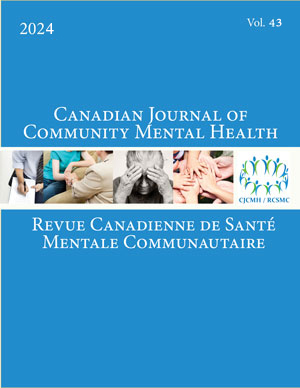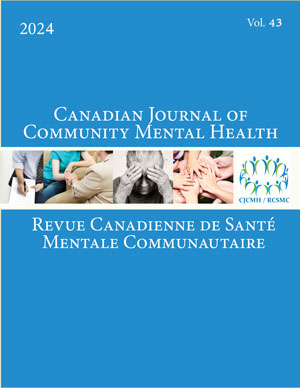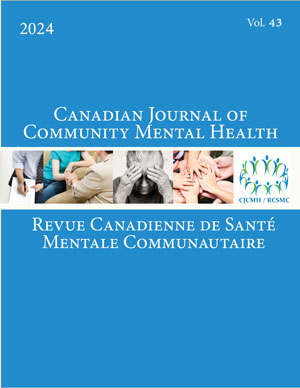Volume 5 • Number 1 • April 1986
OPEN ACCESS
In this paper we consider the role of land use planning in the location of group homes. Exclusionary zoning policies have been used to restrict the entry of group homes into certain residential neighbourhoods. This has resulted in an unequal distribution of these facilities throughout the community. We concentrate on events in Metropolitan Toronto where it has recently been announced that group homes are to be regarded as a permissible land use in all residential neighbourhoods.
OPEN ACCESS
This paper describes the context and process, as well as the content, of an assessment of the housing and social support needs of long-term psychiatric clients in a community. The principles of the ecological perspective were used as a framework for conceptualizing and analyzing the data. Using key informant interviews, community forums, and a survey of the clients, it was found that a visible minority of the population has significant housing problems and lacks adequate aftercare and supervision. The ways in which the data have been utilized are described, along with directions for further action.
OPEN ACCESS
Home care settings remain a primary alternative for the community placement of individuals with chronic psychiatric disabilities. This exploratory study employed survey data collected from randomly selected sheltered care facilities in the City of Winnipeg. The intent was to study the influence operators of sheltered care facilities had both on levels of alienation experienced by their residents and as well, on the level of actual contact residents had with people living in the neighbourhood. It was found that alienation in residents was not related to the level of social alienation expressed by the operators of the board and care homes in which chronic patients resided, but seemed directly tied to the individual resident's level of psychopathology and sex. However, level of psychopathology was not found to be directly related to the degree of actual contact the chronically disabled had with people living in their immediate neighbourhood. Contact with neighbours achieved by the mentally ill was found to be directly related to the level of social alienation of the people operating their board and care residences. Overall, it appeared that women residents under the care of less socially alienated board and care operators, experienced the highest levels of neighbourhood contacts.
OPEN ACCESS
Codes of ethics have been found inadequate for community psychology because of the emphasis on the relationship between the professional and individual clients rather than on the relationship with the community. Explicit value statements and guidelines for resolving dilemmas of conflicting views are often lacking. For purposes of discussion, possible revisions of the preamble and the major principles of the codes of ethics of the American and Canadian Psychological Associations are presented. Vignettes of ethical dilemmas in community psychology and an approach to decision making are also provided. Community psychologists are urged to develop more definitive guidelines.
OPEN ACCESS
Citizen participation in social change may depend, in part, on certain beliefs about the world and about the power of the citizen to change social conditions. To evaluate the belief in personal power and the belief that social conditions are often unjust, two scales were created. The multi-trait multi-method matrix of Campbell and Fiske was used to establish convergent and divergent validity of the English version of the scales. The scales predicted results in relevant experiments and distinguished among community groups that were, or were not, involved in social action. This article presents French versions of the two scales and reliability data from two studies. In the first study, data were gathered from a sample of 100 Acadians in Nova Scotia. The results indicated that the scales have both convergent and divergent validity. In the second study, we administered both the English and the French versions of the scales to a bilingual sample. The correlations between the English and French versions were sufficiently high for the versions to be considered equivalent.
OPEN ACCESS
To adequately conceptualize the potential that self-help groups hold for delivering human services it is important to know about the helping ex-changes between members. Only a few quantified comparative studies of this issue have been completed, and the extent of their generalizability is not known. This paper reports a replication of one of these studies. Rating patterns on a group process questionnaire for the thirteen groups participating in this replication study were robustly correlated with those for the eight groups in the original study. The results also suggested that patterns of helping activities are affected by such organizational factors as meeting format and level of professional involvement. To clarify the nature of these mediating factors and their impact on group functioning it will be useful to explicate the dimensions of heterogeneity between groups in the future and to further refine existing techniques for the measurement of helping exchanges.
OPEN ACCESS
As costs rise and demands for services increase, governments are beginning to insist that mental health program administrators demonstrate that they are “worthwhile” in terms of results produced (outcomes) for money invested (costs). Cost-effectiveness analysis, one economic evaluation model, is presented as a potentially useful tool that can be employed in mental health settings. An overview of the definition, underlying assumptions, and procedures of cost-effectiveness analysis is provided. Issues relating to the manner in which cost and effectiveness information is presented to decision makers along with associated decision rules are also reviewed. It is concluded that it is difficult to “buy” the cost-effectiveness model as it now exists. Modifications in its assumptions, data gathering and data combination techniques are warranted so that the model can be applicable to mental health settings and policies. The general theme underlying suggested modifications is that values and constraints associated with all aspects of a cost-effectiveness problem must be made explicit and should guide analytic procedures.
OPEN ACCESS
This report gives basic descriptive information on 20 assessment/referral services in Ontario. Details of client characteristics and referral practices are also included. The results suggest a diversity of services with some having an uncertain future. A more conservative use of the term “assessment/referral service” is suggested and criteria for defining an assessment/referral service presented. Suggestions for further research are also made.
OPEN ACCESS
The present research studies the level of self-esteem, loneliness and depression in a sample of unemployed university graduates, taking into consideration the duration of unemployment. Thus, the subjects are divided into three groups: recently unemployed (1 month and less), moderately unemployed (6-7 months), and chronically unemployed (11-12 months). The instruments used are The Social Self-Esteem Inventory, The U.C.L.A. Loneliness Scale, and the Beck Depression Scale. The results show that the level of self-esteem is significantly lower for the chronically unemployed as compared to the recently unemployed. On the other hand, loneliness is significantly greater for chronically unemployed than for recently unemployed. Finally, depression is significantly greater for the moderate group as compared to the recent one, and for chronically unemployed than for the recently unemployed. The results for the unemployed university graduates are significantly different from those obtained from non graduates on two variables: the recently unemployed graduates have a greater self-esteem than recently unemployed non graduates. Moreover, the chronically unemployed graduates experience more depression as compared to their non graduate counterparts.
OPEN ACCESS
This article traces and assesses the progress that has been made to date in understanding how childhood chronic illness impacts on subsystems of the family as well as on the family as a unit. Review of both the theoretical and the clinical literature raises several questions, including the utility of adopting a psychopathological model to ascertain the functioning of subsystems and the entire system in families wherein there exists a chronically ill child. The implications of these questions for future research endeavors and for clinical practice are discussed.










